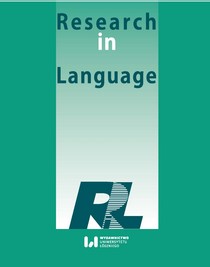EXPLORING COMMUNICATIVE GESTURES IN CZECH PERSONS WITH DIAGNOSED APHASIA
EXPLORING COMMUNICATIVE GESTURES IN CZECH PERSONS WITH DIAGNOSED APHASIA
Author(s): Martin JanečkaSubject(s): Theoretical Linguistics, Semantics, Cognitive linguistics, Western Slavic Languages
Published by: Wydawnictwo Uniwersytetu Łódzkiego
Keywords: Aphasia; gestures; speech; nonverbal communication; multimodality;
Summary/Abstract: In my investigation, I worked with 6 persons with diagnosed aphasia. I introduce some possible perspectives on the exploration of the extent of speech damage in persons with aphasia and the various ways in which they substitute for language deficiency with the aid of gestures. From the viewpoint of data processing methods, on the one hand, I explore the parameters of spoken language, such as the quantity of words, and, on the other hand, the parameters of gestures, such as the quantity of gestures, diversity of gestures, etc. In aphasic persons speaking Czech, I verify the following assumption established by Jakob et al. (2011): the more speech-limited an aphasic person is, the more gestures he/she produces during the interpretation of a story. It was found that the number of words produced by aphasic persons varies, partially dependent on the specific type of aphasia. This is particularly true on both ends of the scale – people with large speech distortion use the highest quantity of gestures, people with low speech distortion use gestures to a lesser extent. Within the classification of semantic gestures, I focus particularly on iconic and deictic gestures. In addition, I presume that symbolic gestures (i.e. emblems) do not occur in aphasic persons’ speech, because aphasic persons prefer gestures that display the plot in the most concrete way. My data correlate with other studies dealing with this topic – aphasic persons do use gestures intentionally to substitute for their verbal deficiency. At the same time, they mostly use very concrete (iconic) gestures, which enable them to transmit a large volume of information.
Journal: Research in Language (RiL)
- Issue Year: 19/2021
- Issue No: 1
- Page Range: 15-32
- Page Count: 18
- Language: English

